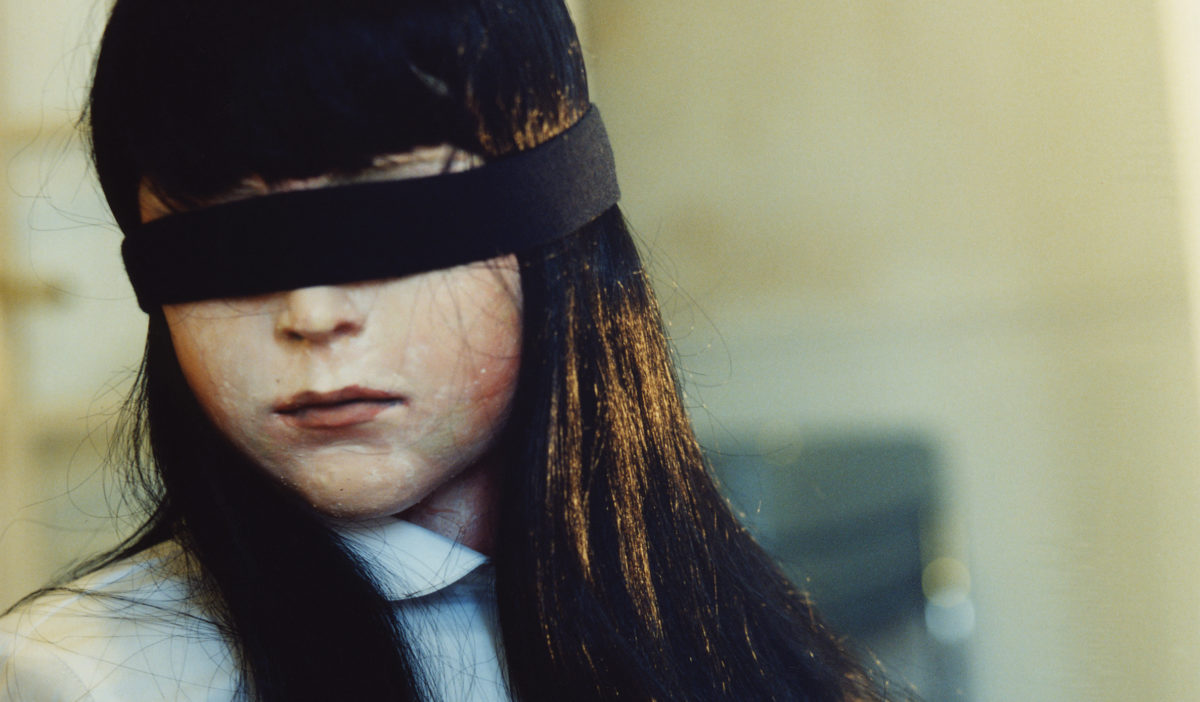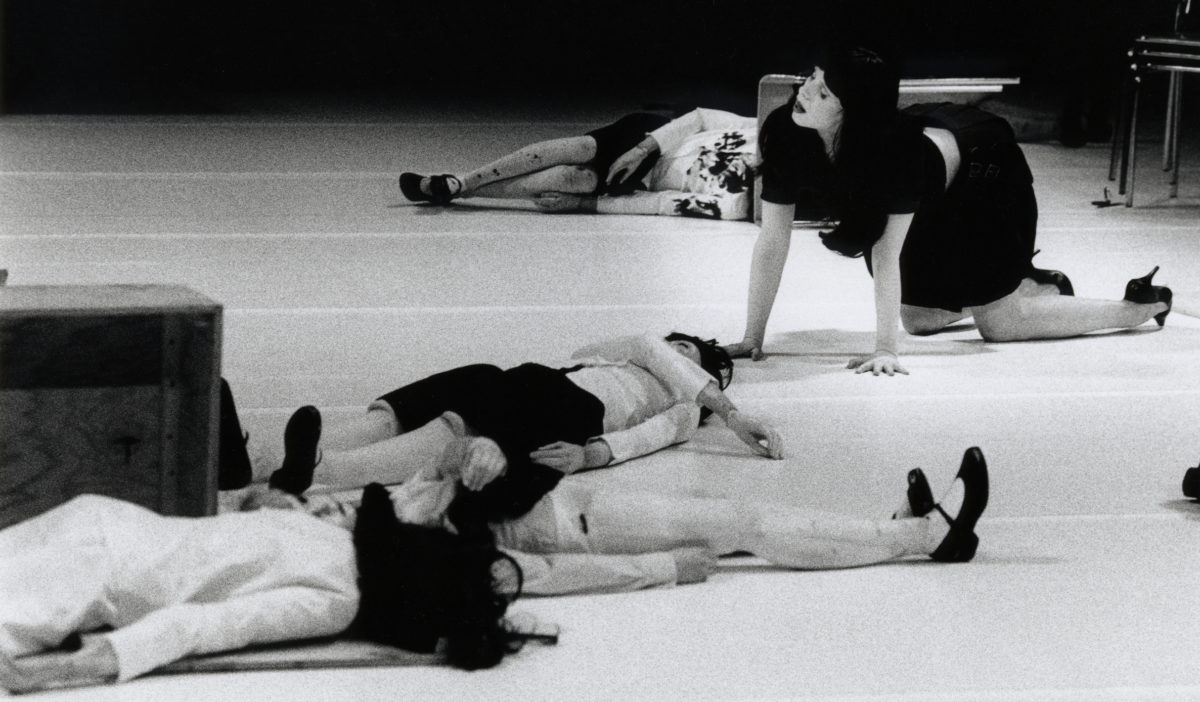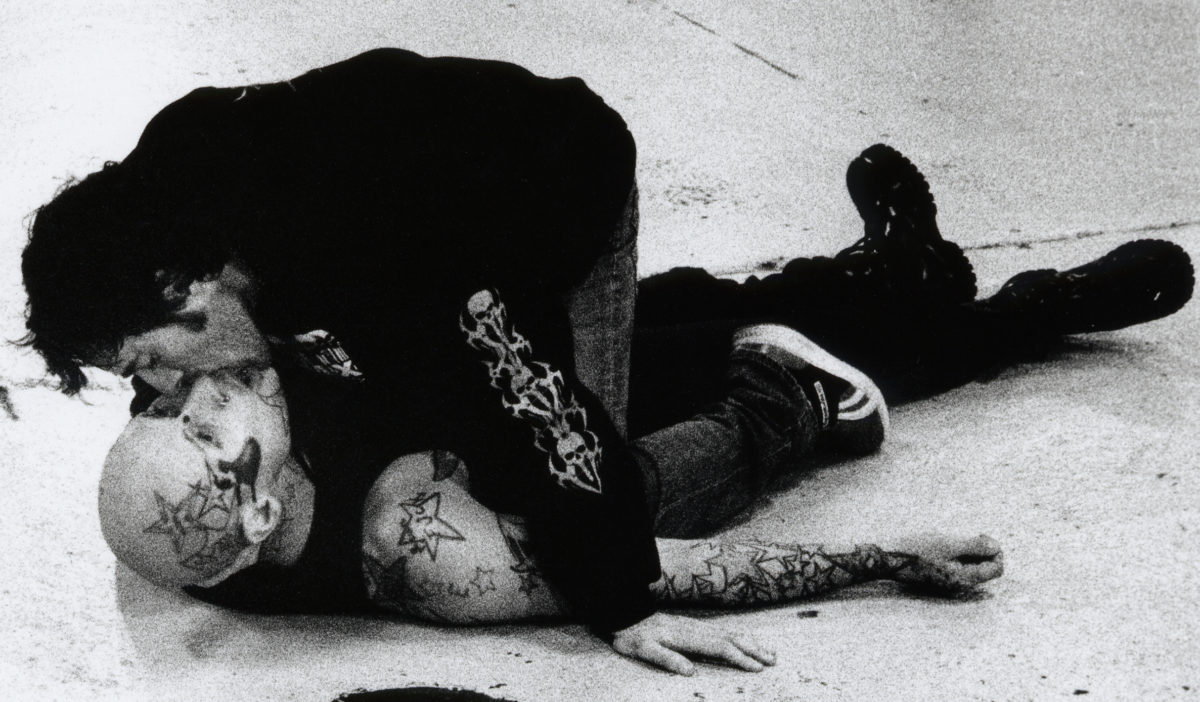I Apologize
Cast
Created by Gisèle Vienne
Texts, written and read by Dennis Cooper
Original music performed live by Peter Rehberg
Light Patrick Riou
Make-up Rebecca Flores
Dolls created by Raphaël Rubbens, Dorothéa Vienne-Pollak & Gisèle Vienne
Translation from English-American to French by Laurence Viallet
Created in collaboration with, and performed by Jonathan Capdevielle, Anja Röttgerkamp (or Katia Petrowick) & Jean-Luc Verna
Partners
Executive producer DACM
Coproducers Les Subsistances, Lyon // WP-Zimmer, AnversWith the support of Centre Chorégraphique National de Grenoble in the frame of Accueil-studio (2004), Ministère de la Culture – Drac Rhône-Alpes, Région Rhône-Alpes, Conseil Général de l’Isère & ske (Autriche)
With the support of Institut International de la Marionnette & Compagnie des Indes for the video shooting
Acknowledgements to Anne-Claire Rigaud, Minijy / Clara Rousseau, Séverine Péan, Sophie Metrich, Esther Welger Barboza, Les Ateliers de construction du Théâtre de Grenoble, Boutique Catherine Lafon – Lyon, Robrecht Ghesquière, Mark Harwood, Jean-Paul Hirsch, Martin Lecarme, Antoine Masure, Paul Otchakov-Laurens, Isabelle Piechaczyk, Béatrice Rozycki, Estelle Rullier, Yury Smirnov, Alexandre Vienne, Jean-Paul Vienne & Villa Gillet
Presentation
Having choreographed and staged Splendid’s (2000), Showroomdummies (2001), Stéréotypie (2003) and Tranen Veinzen (2004) with Etienne Bideau-Rey, and having centred my work on the relationship between natural and artificial bodies, I am now aiming, with I Apologize, to explore this topic further and to work at the same time on the idea of a disturbing strangeness, this time through an accident reconstruction.
I Apologize was born out of this reconstruction, which is the basis from which several versions of the same event derive, in order to define its truth and reality. These various versions take on a blurred identity, somewhere between the representation of a real event and the representation of a fantasy, and are the foundation of the structure of the play, a reflection on reality, and of the possible representations of reality.
A young man is in charge of these different versions of reality, by directing a man and a woman, both baroque and rock icons, and twenty-odd young girls, all aged around twelve, represented by articulated dolls. Confusion slowly creeps in our perception of reality, which thus appears as a world of approximations and subjectivity, whose gaping holes we fill with our own fantasies.
American author Dennis Cooper has written poems and monologues especially for this show, which question the real or imagined link between those and the events happening on the stage. Cooper himself will be reading these texts, which are intricately linked to Peter Rehberg’s musical score. The texts and staging of the play interact and conjure up images associated to sexual desire, death and crime. They raise issues about imagination in relation to fantasy and its impossible fulfilment.
Although music and words are at the core of the show, bodies and dolls – and therefore the aesthetic offering – are also at the centre of the project. This is why this show, although undeniably influenced by choreography, is nonetheless derived from a work process that is truly one of a puppeteer.
This work is designed to be an exploration of the emotions that are born of the intricate link between eroticism, death, and the disturbing stillness of dolls and puppets.
History
-
01 August 2018
-
05 February 2017
-
19 February 2016
-
03, 04, 05 February 2016
-
03, 04, 05 December 2015
-
14, 15 September 2011
-
04, 05 July 2011
-
26, 27 February 2011
-
29, 30 September 2009
-
24, 25 September 2008
-
04, 05 July 2008
-
17, 18 May 2008
-
08 April 2008
-
21 November 2007
-
23, 24 June 2007Festival Internacional en Pé de Pedra, Saint-Jacques-de-Compostelle (ES)
-
26, 27 April 2007Festival Time, Théâtre Minard, Gant (BE)
-
23, 24 March 2007
-
08 March 2007
-
10, 11 November 2006Festival NEO, Barcelone (ES)
-
21 October 2006
-
15 June 2006
-
18, 19 February 2006Festival Escena Contemporanea, Madrid (ES)
-
08, 09, 10, 11, 12 February 2006
-
08 September 2005Festival Off Limits, Dortmund (DE)
-
17, 18, 19, 20, 21, 22, 23 July 2005
-
23, 25, 26 March 2005
-
19 March 2005
-
01, 02 October 2004
-
28, 29, 30 September 2004



